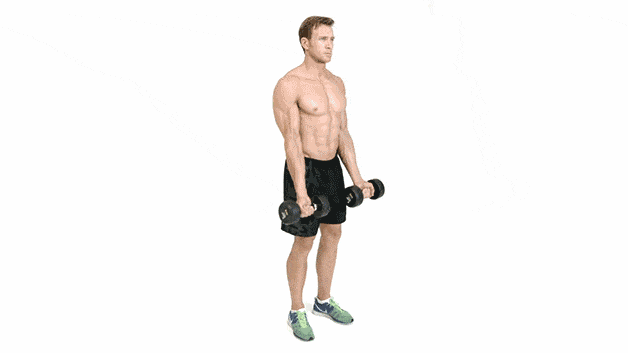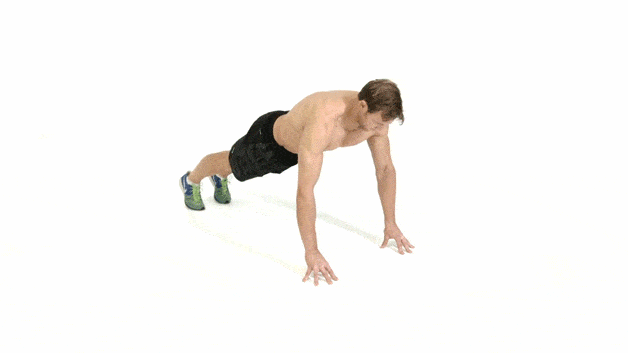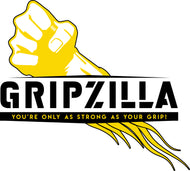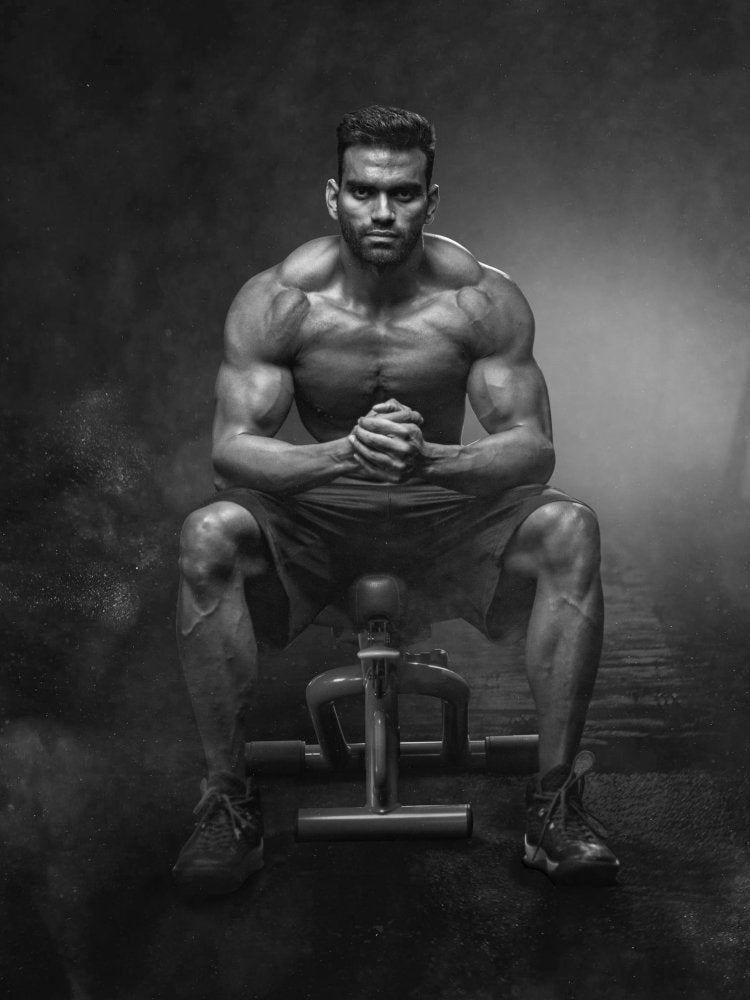Strengthening Your Grip Strength: The Best Exercises
Strengthening your grip will improve your health and boost your muscle mass. You can improve yours by following our complete guide.
Grip strength is important for almost every activity: you need it for just about everything you do.
I want to set aside the weights for a moment. Picking up a box, moving a chair, vacuuming, frying an egg, and even driving all require grip strength. The grip is important in all sports, including cricket, golf, tennis, and rugby. You're right, and if you're into badminton, it does, too...
In addition to this, it can also lead to bigger lifts, faster muscles and serious training gains, so don't let people know. Take a moment to consider this. The bicep curl, hanging leg raise, and farmer's walk are all exercises that excite the muscles. Your grip has often failed you. How often has that happened? Have you ever pressed your chest, then your wrists ached? You have to stop reps or risk injury when they stop or 'pinch' because they are unable to handle the loads you are putting on them.
Studies have shown that weak grip strength can predict shoulder health. The sports science journal Shoulder & Elbow published a study in 2016 that concluded grip strength correlates with lateral rotator strength.
Additionally, grip strength has been shown to be positively associated with general health.
In the PUREE (Prospective Urban and Rural Epidemiological) study conducted in 2015, 140,000 adults were followed for four years. Increasing the risk of cardiovascular diseases is significantly correlated with a decrease in grip strength. They found that a 17% higher risk of dying from heart disease, a 9% higher risk of stroke, and a 7% higher risk of heart attack was associated with each 11-pound reduction in grip strength over the study period.
There is no single study like this. Studies have shown that grip strength is linked to health. The American Journal of Preventive Medicine published a study in 2015 which concluded that people with a lower grip strength were more likely to be diabetic or have high blood pressure.
The Grip Is Made Up Of Which Muscles?
Firstly, grip strength isn't solely determined by your strength in the palm of your hand. Everything from the muscles near the elbow to the fingertips is involved in grip strength.
The forearm and hand contain 35 of the muscles needed to move the fingers
When you use your grip, you primarily use muscles located between your elbow and upper forearm (ulna and radius). – Also known as the flexor digitorum superficialis, the flexor digitorum profundus, and the flexor policus longus – and down into the thumb or fingers (phalanges).

Various grip strengths
There are four main types of gripping that we do with objects in our hands, and each requires a different technique and muscle. You can find them here:
Crushing: The act of closing fingers against resistance. It is similar to clamping (squeezing against something with your fingers) and crimping (directing force into the callous).
Pinching: When thumbs are used instead of fingers to grasp something. A static test (without movement) or a dynamic test (with movement) can be performed.
Supporting: Taking most of the weight with the fingers when lifting something.
Extension: The act of opening the fingers and thumb.
What is the best way to test grip strength?
A hand grip dynamometer is needed for measuring the strength of your hands and forearms. Perform three squeezes on both hands in order to get an accurate reading.
These instruments are available in gyms and many physiotherapists and physicians have them on hand, but you can also buy them relatively cheaply online.
As an alternative to the handgrip dynamometer, you can also use a pinch strength test to obtain a more thorough (and accurate) reflection of grip strength. This test measures the maximal isometric strength of the hand and forearm when pinching. Topendsports.com have produced a guide to expected adult scores based on a collection of tests across many different age and fitness ranges.
Each of these scores is the average of all hands. You should note that this isn't an indication of general strength:
Excellent: >141lbs (>64kg)
Very good: 123-141lbs (56-64kg)
Above average: 114-122lbs (52-55kg)
Average: 105-113lbs (48-51kg)
Below average: 96-104lbs (44-47kg)
Poor: 88-95lbs (40-43kg)
Very poor: <88lbs (<40kg)
How to improve grip strength with these 5 exercises
You will notice gains in grip strength almost immediately when you start working on it.
Scott Mendelson, fitness adviser, says using compound exercises like deadlifts and dumbbell exercises can develop great forearms and massive grips in no time.
You can improve your grip strength by performing moves in the gym or by using only your own bodyweight by following the exercises below. Additionally, we have included some top tips and quick wins to help you get started quickly.
1. Deadlift
The simplest way to stress your forearms and improve your grip strength is lifting heavy. And there’s nothing better, or more effective, than deadlifts. Quite simply, lift heavy things off the floor – safely, may we add – and put them back down again. Deadlifts work so well because of the variety of hand grips you can use.
Top tip: Mix it up to keep your body guessing. On some days, go heavy on low reps. On others, lighten the load and go for longer. This will help improve both your explosive power and strength, but also your cardio and muscular endurance.

2. Zottman Curl
A top endurance athlete and adventurer, Ross Edgley suggests developing forearm strength by doing the Zottman curl. “The rotation of the Zottman curl will train the biceps as well as the forearms.

3. Farmer’s Walks
It is awesome about this exercise that you can use anything to do it. During this walking exercise, you will carry weight until you reach the end. When you start to tire, put the weight down, shake it off, and start again. It doesn’t get any simpler than that.

4. EZ reverse curl
Crank up and down while holding a bar in both hands. At the bottom of the curl, Mendelson advises moving the weight away from your palm as you increase difficulty.

5. Using Hand Grippers (Gripzilla Ultimatum.)
- Basic grippers operate on steel loops that flex and extend as you squeeze. Some made in this style are extremely strong; others are not.
- Some grippers stretch a steel spring when you squeeze.
- Other grippers compress a steel spring when you squeeze.
Best Bodyweight Exercises to Improve Grip Strength
1. Pull-Ups
Parallel bars require strong grips and significant strength to raise your body to them. You'll notice that your forearms are pumped after completing a set of pull-ups.
If you have mastered this bodyweight staple and have mastered pull-ups, add a few towels over your bar to make it harder and significantly more grip effective.

2. Dead Hang
You can build grip strength by doing dead hangs. You simply hang from an overhead bar, arms extended and bones hollow, as the name suggests. Do you have any experience with the hand? Grip the bar for 20 to 30 seconds each time.

3. Press-Ups (fingers only)
Using this exercise can improve your fingers, wrists, and forearms strength as soon as you master it. You will need to press up with your hands placed shoulder-width apart. Put your fingertips on your palms. Push back up with explosive force when your chest is an inch from the ground.

4. Reverse Press-Up
When you reverse your grip, you place more emphasis on your wrists and forearms. You need not worry, however. There will still be a hammering on your chest. I think we're both winners here.
Best Stretches for Grip Strength
People who work at a desk and lack dexterity in their muscles suffer from tight wrists. The benefits of stretching include making muscles more flexible and strengthening them. Below are some suggestions:
- Fingers back, palms on the desk: Stretch by leaning back and forth on your bodyweight and gently side to side. Go for 15 seconds.
- Fingers back, palms off the desk: Lifting your palms up places the emphasis on your fingers more. Go for 15 seconds.
- Clenched fists: While seated, place your hands on your things with palms up. Close your fists and, with your forearms touching your legs, raise your fists off of your body bending at the wrist. Hold for 10 seconds.
- Tennis ball squeeze: Grab a tennis ball or a smaller squash ball and squeeze tightly for 15 seconds at a time.
- Using 5piece gripzilla kit for best stretches and warmups for your grip, forearm and fingers.




